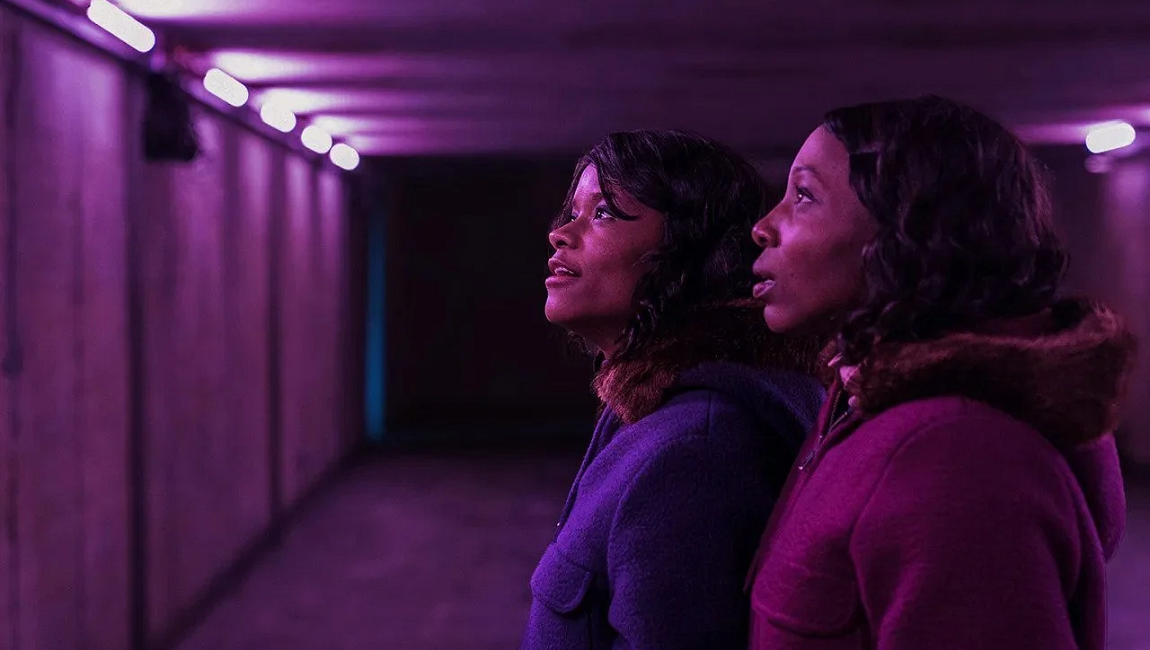The Silent Twins flattens any psychological depth found in its characters and suffers from a directorial style mismatched to the content at hand.
The story of June and Jennifer Gibbons remains, till this day, a fascinating and somewhat unnerving one. Despite having assimilated into mainstream media via tabloids, a bestselling book by Sunday Times reporter Marjorie Wallace, a play based on the book, a television film, and a documentary, this tale of two sisters — capable of language but refusing to partake in it except with each other — defies most ordinary comprehension of psychological norms and deviations. They weren’t outright mentally deficient, as demonstrated by their ventures into creative writing, and neither were they subjected to any known mental trauma in their formative years. Their turbulent and somewhat tragic years post-adolescence, however, have been met with great public sympathy; more than curious empirical specimens, June and Jennifer embodied, culturally speaking, the marginalized Other. Hailing from Barbados and immigrating to England in 1963, before settling in Wales eleven years later, the Gibbons family was as much a product of colonial policy as it strived to assimilate into the world after colonialism.
What director Agnieszka Smoczyńska does, then, in her dramatization of the lives of the silent twins, is situate them smack center within their milieu. The Silent Twins, her English-language debut, purposefully intertwines the central mystery of June and Jennifer’s asociality with their social present. The year is 1974 and T. Rex’s “Hot Love” pervades all of Britain through the radio. Amidst polite English ideals at direct odds with counter-cultural ideology and youthful malaise, June and Jennifer grow up, and grow inward. Smoczyńska is under no illusion about this: she deploys vivid, stop-motion puppetry (courtesy of Albert Coen and Barbara Rupik) in conjuring this inner world, replete with talking parrots and a radio station of which the girls are hosts. Over the course of almost two hours, her film charts the chronology of June and Jennifer, first played by Leah Mondesir Simmons and Eva-Arianna Baxter as children, then by Letitia Wright and Tamara Lawrance respectively. Rejected from wider society because of their extreme introversion, or perhaps vice versa, the twins retreat with ever more determination into the arms of each other, communicating in a distinctive and sped-up version of Bajan Creole no psychologist, therapist, or schoolmaster could hope to acquire or supplant — at least, not until Wallace’s (Jodhi May) coverage of their lives under institutionalization.
Smoczyńska’s lurid, incandescent sensibilities, otherwise starkly and exquisitely original, are here employed in service of The Silent Twins’ rote, impenetrable, yet cheaply empathetic colorization of grayscale history. In contrast with her earlier films, whose fantastical (The Lure) or oneiric (Fugue) qualities demanded such creative license, her latest provides the opportunity for either outright fictionalization or outright fidelity. As it stands, the biopic trappings at hand are neither; in wanting both to have their cake and eat it, they flatten the film’s psychological depth despite its apparent attempts to map the mind. Sprinkled throughout The Silent Twins are cultural tidbits and itineraries: American teen flamboyance in a sequence where June and Jennifer explore — for the first time — their overdue sexual desires, Charles and Diana as universal marker for the eighties, plasticized set designs and interiors for garish, mouth-watering effect, etc. While period drama isn’t a crime, committing a majority of the film to a clearly heightened and touristy rendition of its epoch hasn’t, historically speaking, proven very inspiring.
And this lack of inspiration, or larger purpose, hampers The Silent Twins fatally. Where the twins’ motives and mental states are concerned, cause and effect are scarcely touched upon; Smoczyńska doesn’t quite, and possibly can’t quite, articulate the limits of their language to our world. But the film effectively wants to: it seeks to imagine June and Jennifer almost exclusively as the consequences of racial and cultural misunderstanding, maladjustment, mistreatment. Its subtext reads as tediously mainstream, ticking for the modern audience all the checkboxes of racist incarceration, ostracization, post-war imperialism and intolerance, even if it does not explicitly state this thesis (possibly by reimagining the twins’ later imprisonment solely due to xenophobia). Works like Steve McQueen’s Small Axe have tackled these topics head-on and without conduit, so here the window dressing rubs quite the wrong way. Most crucially, the film’s fetishization of the twins’ lives, in typical biopic fashion, mutes a great deal of sound — their self-expression and mutual identification, rooted in a paradoxical yet strangely normal love-hate siblinghood, are neither wholly abstracted into fiction nor radically envisioned as impenetrable reality. The treatment that emerges is sanctioned by a half-baked willingness to confront the Other without accepting it as truly, inexplicably Other, relegating the twins to sociological enigma; and perhaps, in light of the unknown, silence remains the golden rule.







